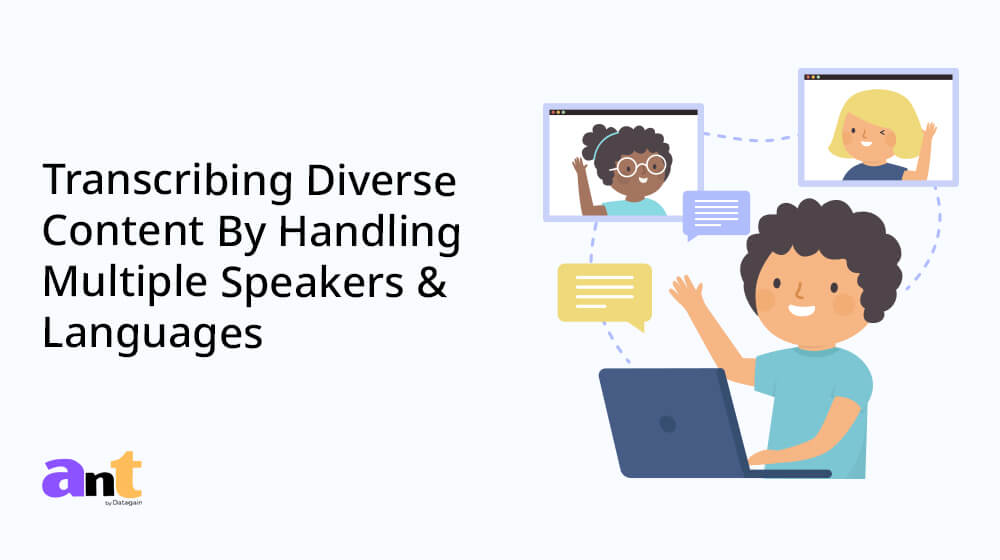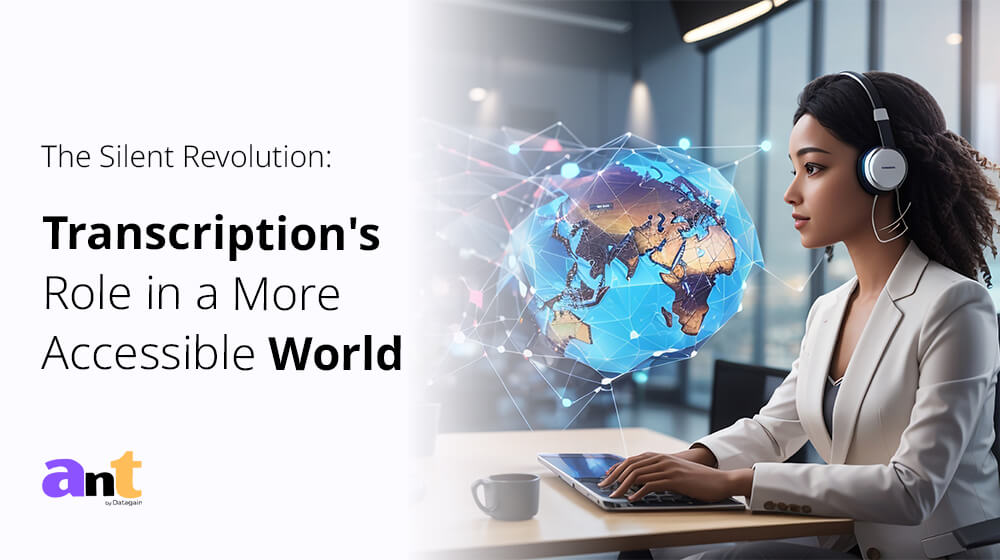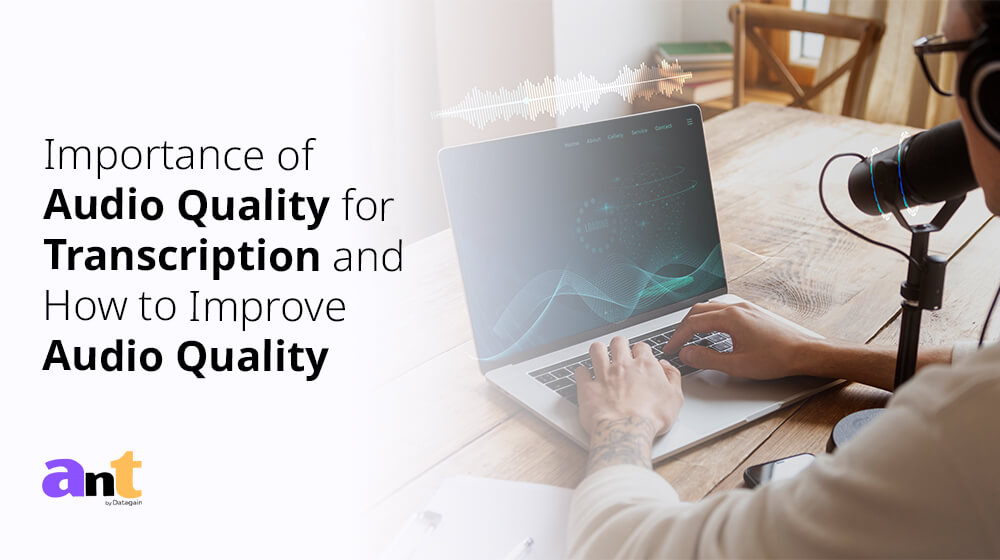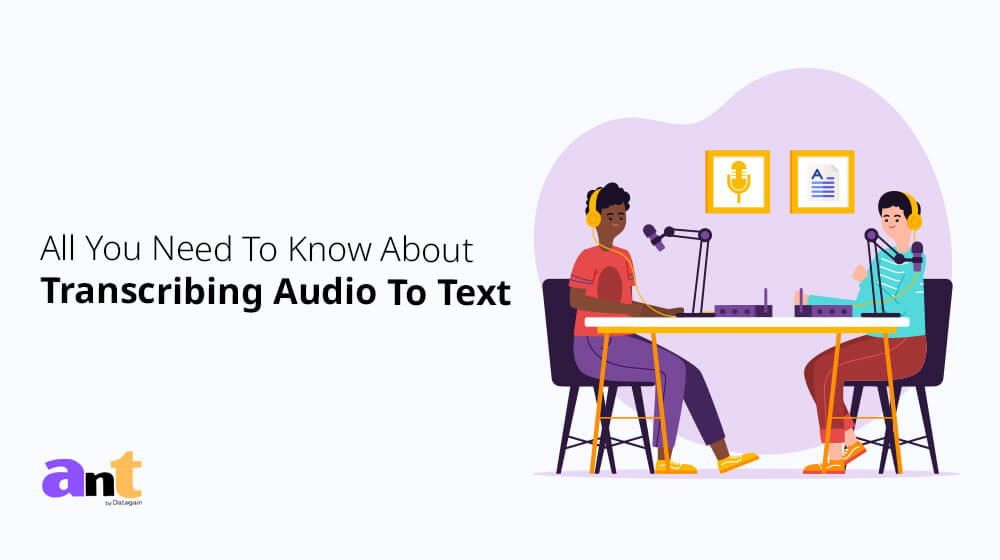Transforming spoken words into written text is a game-changer across numerous industries. From academics to businesses, it has multiple applications. When dealing with diverse content, it is quite challenging to deal with multiple speakers and languages. But with the right transcription partner by your side, one can easily get the best services. Read on to find out more about transcribing diverse content, its types, emerging challenges, and its growing popularity in present times.
Transcription and its types
Spoken language getting converted into written text can be classified on multiple parameters. This includes classification based on the technology used, purpose, methodology, language, and end goal. Irrespective of the type, great attention to detail and linguistic proficiency is always a must throughout the process. Broadly, transcription based on technological evolution is categorized into the following:
Manual Transcription – Manual Transcription also known as conventional transcription, it belongs to the transcription era when no software was involved in the process. It was a challenging task because while transcribing diverse content, there was no support tool and completion took a lot of time.
Automated Transcription – In automated transcription, speech recognition technology enables software to convert audio into written content. The process is less time-consuming but has issues with generating poor-quality content and multiple languages.
Hybrid Transcription – Hybrid transcription involves a combination of both and uses software technology along with human expertise. Presently, this is one of the highly preferable methods as it ensures accuracy along with speed.
Challenges In Automated Transcription With Multiple Speakers
When it comes to transcribing audio with multiple speakers, many challenges need consideration. Here are those challenges:
Speaker Identification
One of the key challenges while handling multiple speakers in the transcription process is recognizing and differentiating between speakers who often overlap during the conversation. This sometimes affects the accuracy and needs to be handled carefully, especially in cases of transcribing legal proceedings, interviews, and similar content.
Overlapping Speech
The second issue on our list while dealing with multiple speakers is overlapping speech. When more than one speaker talks, it becomes challenging to interrupt the content, and repetitive listening along with some intelligent guessing comes into the picture. However, this also adds to the chances of inaccuracy.
Varying speaking styles
Switching listening and typing speed is also challenging when speakers have varying speaking styles. Some are faster than others, some take a lot of pauses and this makes it difficult for transcribers as they have to pay attention to every detail and produce accurate content.
Background Noises
Background noises also act as a hindrance in efficient transcription processes. It gets tough for the transcribers to interpret the correct meaning if there are repetitive noises in the audio. When dealing with multiple speakers, the situation worsens.
Accent and Dialect Differences
Every speaker carries a unique accent and dialect. Transcribers at times find it difficult to focus on the constantly changing accents in case of multiple speakers. This issue is often critical with automated transcriptions.
Emotional Tone and Inflections
Switching between speakers also affects the understanding of emotional tone during transcription. Emotional tone and inflections are important while dealing with content related to counseling and other qualitative research-based content.
Contextual Understanding
Contextual understanding or cultural reference is equally important for accurate transcription. With multiple speakers, this issue persists and transcribers face issues.
Solutions For Dealing With Multiple Speakers Transcription
Once you are well-versed with the challenges arising while dealing with multiple speakers, now it’s time to look for possible solutions.
Using updated software and equipment
With good quality recording equipment and encouraged use of updated software for sharing content, speaker identification issues can be solved in no time. Initially, this can be challenging, but keeping a consistent approach helps. Also, using software that separates the audio content of multiple speakers can be considered.
Apt tool choice
Thanks to the thriving technological world, transcribers now have access to tools that offer slow playback and similar features to recognize and decode multiple voices. Transcribers can be provided these tools as per their needs to update the efficiency of the final content.
Noise cancellation software
Noise cancellation software is a game changer in dealing with transception issues because it eliminates various noises. With their use, transcribers can get the best quality audio and pay attention to details required for efficient transcription.
Training and practice
With the right training and practice, your transcription team can offer exceptional results. Offering access to the right tools and investing in training modules can help transcribers sharpen their skills.
A consistent approach
To overcome challenges in transforming diverse content and handling multiple speakers, a consistent approach is non-negotiable. With the right collaboration and communication, transcription services can be significantly improved.
Challenges In Manually Transcribing Content With Multiple Languages
Not just multiple speakers, transcribing content with multiple languages is equally challenging. Let us understand what issues arise while dealing with multiple language content transcription.
Language proficiency issues
When dealing with multiple languages, the language proficiency of the transcriber is tested, and getting the best outcome gets challenging. For instance, if there are three languages involved and the transcriber is only good at two of them, this can result in inaccuracy.
Switching between languages
Somewhat identical to switching between the speakers, switching between languages affects continuity. The risk of misinterpretations multiples in such cases. Transcribers might lose the context of the content.
Decoding accents right
Switching between languages also means switching between various accents and interpreting the most accurately of all. This sounds ideal in the world of transcription but is a constantly emerging challenge, especially for beginners who have previously worked with single-language projects.
Context and meaning
When multiple languages are involved, one has to remain aware of script differences because misattribution can change the whole context and meaning of the content produced. Grammar also plays an important role in getting the right context and meaning.
Terminologies and Jargons
Many terms exist only in one language and it is extremely tough to find the equivalent translation. Also, using other terms can change the meaning and affect the overall content.
Poor audio quality
At times, transcribers need to deal with poor-quality audio by the clients or some have background noises making it difficult to decode content. The challenge of multiple languages is already there and additional issues make it harder.
Cultural sensitivity
Cultural sensitivity cannot be overlooked when expecting the best transcription results. Transcribers need to ensure that the content they offer has the essence of cultural sensitivity with no scope for misinterpretation.
Solutions For Dealing With Multiple Languages
Here’s all that can be done to cope with the issues and challenges while transcribing diverse content in multiple languages.
Highly proficient transcribers
With highly efficient transcribers who can smoothly transition between multiple languages, one can overcome the issues of language proficiency. With the right training programs, beginners too can achieve the highest level of proficiency.
Protocols for language switches
By developing a protocol for the specific language switches, the issues can be tackled. Having a note of language switches can offer additional benefits.
Creating a diverse group
Transcribing diverse content demands a highly skilled group of transcribers who come from various backgrounds. This diversity needs constant encouragement to get the best services.
Investing in the right tools
There are many ai-integrated tools for transcribers aiming to minimize inefficiency and offer top-quality content. Having the list of the right tools tailored to your projects can help in dealing with multiple issues in this domain.
Context management
By creating a module for transcribers with the best examples of context management, transcribing diverse content can get better. Having terminology databases is also considerable.
Developing cultural sensitivity
At last, when talking of multiple language solutions, adding cultural sensitivity to the list is a must. Developing guidelines and consulting cultural experts can help with the same.
Way Forward
Transcribing a diverse range of content, especially while dealing with multiple speakers and languages, is challenging. However, with the right transcription partner by your side, you can easily cater to the needs of your audience. For exceptional transcription services, you can join hands with us at ANT Datagain. With tailored solutions for managing complex audio files, we never compromise on accuracy. Also, we offer quick turnaround times and have the best tools for data security. Our culturally aware and highly strategic transcribers leverage their technical expertise to ensure your transcription experience is smooth and efficient.

















